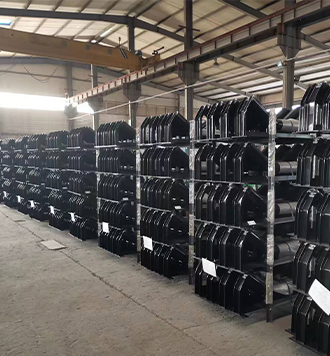 Afrikaans
Afrikaans  Albanian
Albanian  Amharic
Amharic  Arabic
Arabic  Armenian
Armenian  Azerbaijani
Azerbaijani  Basque
Basque  Belarusian
Belarusian  Bengali
Bengali  Bosnian
Bosnian  Bulgarian
Bulgarian  Catalan
Catalan  Cebuano
Cebuano  Corsican
Corsican  Croatian
Croatian  Czech
Czech  Danish
Danish  Dutch
Dutch  English
English  Esperanto
Esperanto  Estonian
Estonian  Finnish
Finnish  French
French  Frisian
Frisian  Galician
Galician  Georgian
Georgian  German
German  Greek
Greek  Gujarati
Gujarati  Haitian Creole
Haitian Creole  hausa
hausa  hawaiian
hawaiian  Hebrew
Hebrew  Hindi
Hindi  Miao
Miao  Hungarian
Hungarian  Icelandic
Icelandic  igbo
igbo  Indonesian
Indonesian  irish
irish  Italian
Italian  Japanese
Japanese  Javanese
Javanese  Kannada
Kannada  kazakh
kazakh  Khmer
Khmer  Rwandese
Rwandese  Korean
Korean  Kurdish
Kurdish  Kyrgyz
Kyrgyz  Lao
Lao  Latin
Latin  Latvian
Latvian  Lithuanian
Lithuanian  Luxembourgish
Luxembourgish  Macedonian
Macedonian  Malgashi
Malgashi  Malay
Malay  Malayalam
Malayalam  Maltese
Maltese  Maori
Maori  Marathi
Marathi  Mongolian
Mongolian  Myanmar
Myanmar  Nepali
Nepali  Norwegian
Norwegian  Norwegian
Norwegian  Occitan
Occitan  Pashto
Pashto  Persian
Persian  Polish
Polish  Portuguese
Portuguese  Punjabi
Punjabi  Romanian
Romanian  Russian
Russian  Samoan
Samoan  Scottish Gaelic
Scottish Gaelic  Serbian
Serbian  Sesotho
Sesotho  Shona
Shona  Sindhi
Sindhi  Sinhala
Sinhala  Slovak
Slovak  Slovenian
Slovenian  Somali
Somali  Spanish
Spanish  Sundanese
Sundanese  Swahili
Swahili  Swedish
Swedish  Tagalog
Tagalog  Tajik
Tajik  Tamil
Tamil  Tatar
Tatar  Telugu
Telugu  Thai
Thai  Turkish
Turkish  Turkmen
Turkmen  Ukrainian
Ukrainian  Urdu
Urdu  Uighur
Uighur  Uzbek
Uzbek  Vietnamese
Vietnamese  Welsh
Welsh  Bantu
Bantu  Yiddish
Yiddish  Yoruba
Yoruba  Zulu
Zulu Understanding Conveyor Take-Up Pulley Functionality and Importance in Material Handling Systems
The Importance and Functionality of Conveyor Take-Up Pulleys
Conveyor systems are a crucial element in many industrial applications, facilitating the movement of bulk materials and products. Among the various components that make these systems effective, conveyor take-up pulleys play a vital role. These pulleys are critical for maintaining tension in the conveyor belt, ensuring smooth operation, enhancing the lifespan of the belt, and improving overall efficiency.
What is a Conveyor Take-Up Pulley?
A conveyor take-up pulley is a component specifically designed to manage and provide tension to the conveyor belt. Located at the end of the conveyor system, the take-up pulley ensures that the belt remains taut, preventing slippage and excess wear. Typically, take-up pulleys are adjustable, allowing operators to fine-tune the tension based on operational needs and the specific characteristics of the materials being transported.
The Role of Tension in Conveyor Systems
Proper tension in a conveyor belt is essential for various reasons. First and foremost, adequate tension helps prevent the belt from slipping off the pulleys during operation. A loose belt can lead to misalignment, resulting in material spillage and decreased efficiency. Moreover, an incorrectly tensioned belt can wear out more quickly, leading to increased maintenance costs and downtime.
Additionally, tension contributes to the overall performance of the conveyor system. A well-tensioned belt ensures consistent material flow, minimizes vibration, and reduces the chances of belt damage. This, in return, allows for higher productivity levels, making conveyor systems more effective in transporting materials from one point to another.
Types of Take-Up Systems
There are various types of take-up systems used in conveyor designs, each with its advantages and specific applications. The two primary types are
1. Mechanical Take-Up This system uses a series of pulleys and adjusting screws to fine-tune the tension manually. Mechanical take-ups are straightforward and cost-effective, making them a common choice in many industrial settings. However, they require regular monitoring and adjustment to maintain optimal tension.
conveyor take up pulley

2. Hydraulic and Pneumatic Take-Ups These systems utilize hydraulic or pneumatic pressure to adjust the tension automatically. They provide more precise control over tension adjustments and reduce the need for manual intervention. This makes them suitable for high-capacity conveyor systems where consistent performance is critical.
Advantages of Conveyor Take-Up Pulleys
The implementation of conveyor take-up pulleys in a conveyor system brings several advantages
- Enhanced Durability By maintaining proper tension, take-up pulleys contribute to the longevity of the belt and other components, thereby reducing the need for frequent replacements.
- Operational Efficiency Properly tensioned belts facilitate smoother material handling, which leads to increased operational output and efficiency.
- Reduced Maintenance Costs With an efficient take-up pulley system, there can be a significant reduction in maintenance needs. This translates to lower costs and less downtime for repairs.
- Improved Safety A well-maintained conveyor system is safer for operators, as it minimizes the risk of accidents caused by slipping or misaligned belts.
Conclusion
In summary, conveyor take-up pulleys are essential components that support the efficient operation of conveyor systems. By maintaining appropriate belt tension, they help prevent issues that could otherwise lead to operational disruptions, safety concerns, and increased costs. Understanding the importance of these pulleys, their types, and their contribution to overall conveyor performance is vital for anyone involved in the design, implementation, or maintenance of conveyor systems. Investing in the proper type of take-up pulley can significantly enhance the reliability and productivity of industrial operations, making them a critical focal point in modern material handling systems.
-
Revolutionizing Conveyor Reliability with Advanced Rubber Lagging PulleysNewsJul.22,2025
-
Powering Precision and Durability with Expert Manufacturers of Conveyor ComponentsNewsJul.22,2025
-
Optimizing Conveyor Systems with Advanced Conveyor AccessoriesNewsJul.22,2025
-
Maximize Conveyor Efficiency with Quality Conveyor Idler PulleysNewsJul.22,2025
-
Future-Proof Your Conveyor System with High-Performance Polyurethane RollerNewsJul.22,2025
-
Driving Efficiency Forward with Quality Idlers and RollersNewsJul.22,2025





























